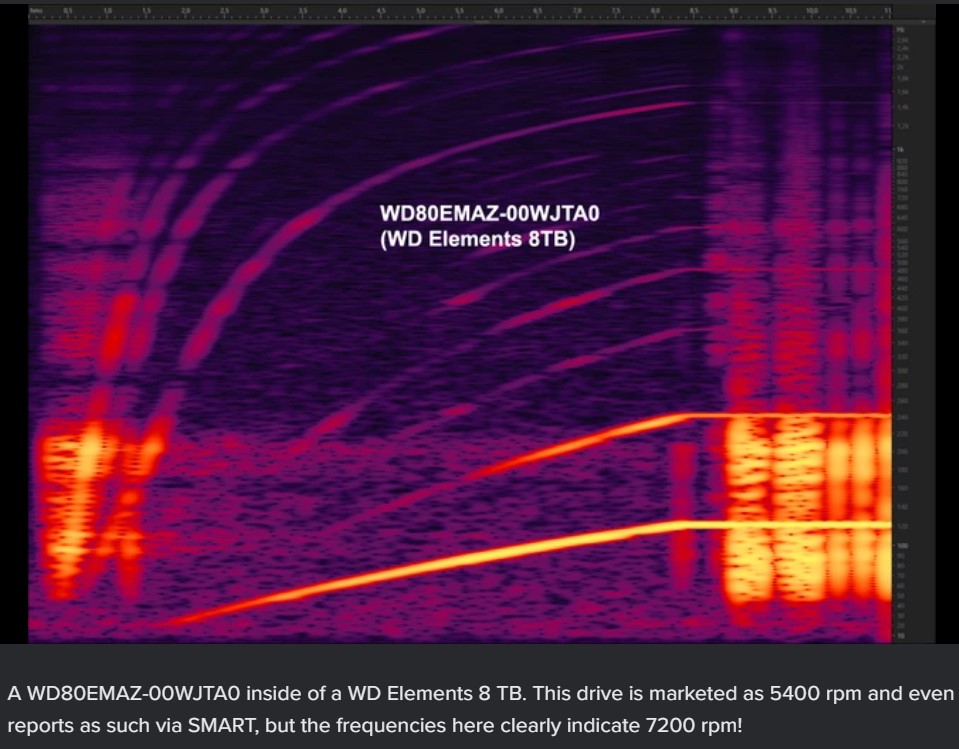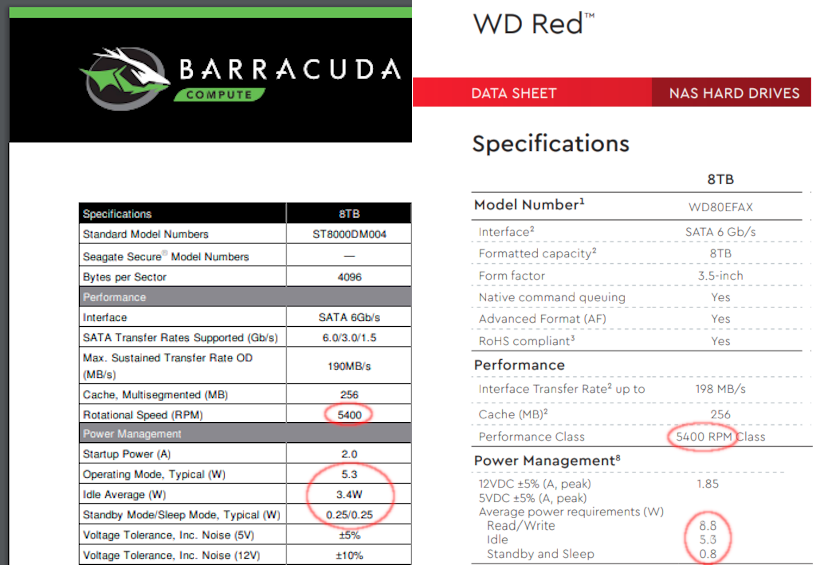
People Discover Their Western Digital Reds Are Running at Higher RPMs
- WD is again at the epicenter of criticism after people found out their disks are running at different RPMs than declared.
- The vendor responded by saying that these discrepancies don’t matter since the product is on the declared performance class.
- Buyers of the affected models are complaining about increased noise and energy consumption than expected.
After the legal trouble that Western Digital found themselves in due to the false marketing promises they made around “WD Red NAS,” the company is called to give additional explanations about another aspect of the same product.
More specifically, the WD Red users noticed that their disks were a lot noisier and drew more power than what is expected from a hard drive that runs at a maximum rotational speed of 5,400 RPM (rotations per minute), so they suspected that it could be actually spinning faster.
Since last week, users from around the web have been testing various WD models that are known to belong to the “5,400 RPM class” and found that they spin at 7,200 RPM.
Related: ‘Western Digital’ Sued for Selling Inferior Quality NAS Drives
So far, the following models have been confirmed to operate at different specs from those declared in the official spec sheet:
- WD80EMAZ-00WJTA0 (WD Elements 8TB)
- WD80EDAZ (WD Elements 8TB)
- WD80EZAZ-11TDBA0 (WD MyBook 8TB)
- WD80EFAX (WD Red Plus 8TB)
- WD100EFAX/WD101EFAX (WD Red Plus 10TB)
- WD80EFZX (old WD Red 8TB)]
- WD80EFAX (WD Red Plus 8TB)
In some cases, users didn’t find evidence only through actual measurements, but by discovering that some models are basically re-badged UltraStars that are known to be 7,200 RPM disks. That is even though the drivers’ own firmware SMART interface reports 5,400 RPM, so apparently, there’s a high level of trickery going on here.
Source: Imgur | Amaroko
Western Digital’s official response was the following:
So, essentially, for Western Digital, the difference between 7,200 and 5,400 RPM is wholly attributed to “fine-tuning” on some models. The vendor’s statement basically says that a 7,200 RPM disk can belong to a 5,400 RPM class if they deem the performance similar to other products in that class. Also, by not being accurate, they are saving costs and passing these savings to the customer. Confused?
Source: Ars Technica
If the spec sheet isn’t there to inform the user of the technical characteristics of the device they’re buying, then what is the purpose of the spec sheet in the first place? Rotation speeds are an important factor to consider for users looking to get something quiet and frugal, so defining everything in terms of write and read speed performance is plainly wrong.
That said, a class-action lawsuit against Western Digital wouldn’t be a surprise now.








